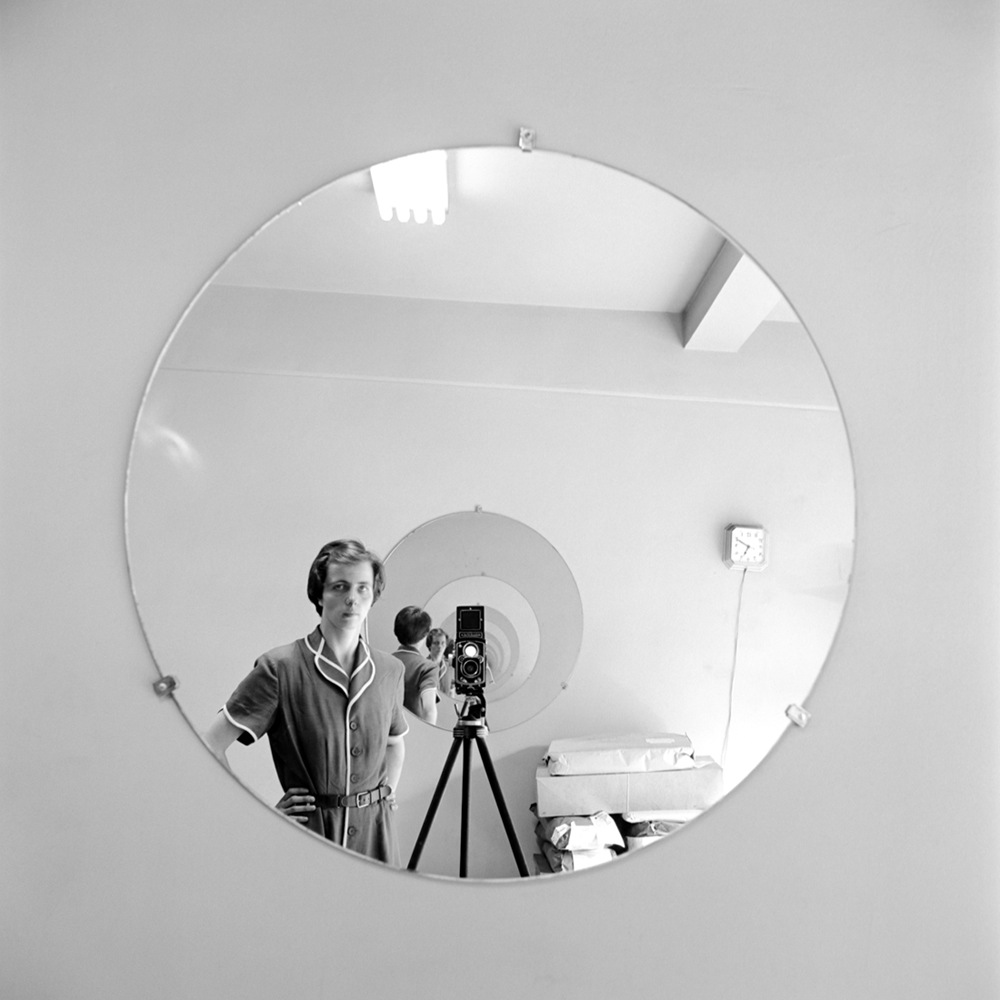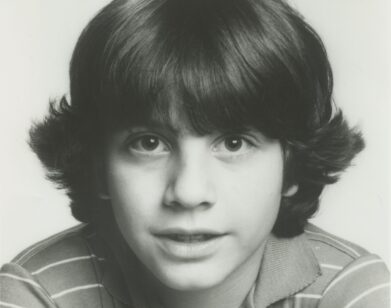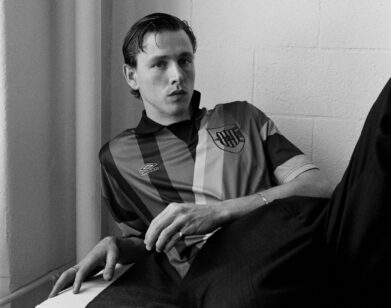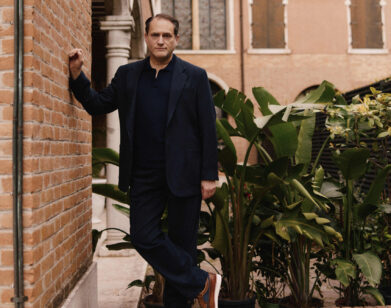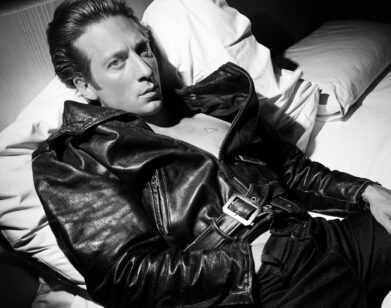The Mystery of Vivian Maier
In 2007, Chicago historian John Maloof was sifting through negatives at an estate sale, on the hunt for appropriate images for his work-in-progress book on the Portage Park neighborhood. A box of negatives he purchased for around $400 seemed like the sort of helpful ephemera that would bring the visuals of Chicago in the ’50s and ’60s into focus; instead, he found the work of an unknown photographer named Vivian Maier whose photography echoed the stylistic traditions of street photography masters like Weegee, Gary Winogrand, Saul Leiter, and Lisette Model.
Maloof has since devoted much of his life to Maier, managing her archive, publishing the monographs Vivian Maier: Self Portraits and Vivian Maier: Street Photographer, and working to get her recognized by the artistic institutions of which he feels she is worthy (she is represented by Howard Greenberg gallery in New York), all while unraveling the very complicated story of who exactly Vivian Maier was (a first quick Google search revealed nothing; the second, merely her 2009 obituary). Maloof’s search for Maier is documented in his first film, Finding Vivian Maier, which he co-directed with fellow Chicago native Charlie Siskel.
What Maloof did know—that Maier, seen in self-portraits dressed in broad-brimmed hats and mannish coats, always with her trusty medium-format Rolleiflex camera, was a lifelong nanny and caretaker born in New York City—led to a two-fold investigation: into Maloof’s process of bringing Maier to the attention of the public, and into Maier herself, told through what she left behind (thousands of rolls of unprocessed film, a few letters, receipts) and the few people who knew her—her employers and the children she nannied. The result is a complex portrait of a private woman—one who was as fiercely devoted to her art as to her charges, but also, quite possibly, a past victim of abuse and mental illness.
Interview recently spoke to Maloof in New York; Siskel called in on speakerphone.
COLLEEN KELSEY: Prior to finding Vivian’s work, how interested were you in photography?
JOHN MALOOF: I was not at all.
KELSEY: What were the qualities that stood out that made you think that these images could be something more than just basic documentary photography?
MALOOF: I didn’t think it was really that big of a deal when I bought it. I was coming off of doing a history book of my neighborhood in Chicago, so the images that I was attracted to were the images of Chicago in the ’50s and ’60s that I thought were kind of cool. But that is what inspired me to start to take photos of Chicago like this person did. Then I got really hooked on photography. Shortly after, I took classes at a community college on how to print and develop my negatives. I started a darkroom in my house. Then I realized, because I would always go back to scanning the work and then I’d get inspired to take similar photos. [laughs] I was basically copying her 50 years later. That’s when I realized that I was overlooking a lot of her amazing work, which was her street photography. But then I put it online and my hunch that this was good work was validated—it went viral.
KELSEY: Obviously you’ve worked quite a bit to get Vivian’s work out there, but how did making a film about the process of finding her come about, and how did Charlie enter the situation?
MALOOF: As this whole thing unfolded, I wanted to know who this person was. I found out the name was Vivian Maier—nothing was online. So I was like, this is probably like a journalist for some newspaper. I started to realize that this was better work than I originally thought, and I tried to do a little bit more research by Googling her again. I found the obituary, and then I found an address that led me to a family that she worked for, and they told me that this was their nanny and they were very close to her—she worked for them for like 17 years or something. But they didn’t know anything about her past. I thought that was really fascinating. When the story was starting off in 2010, Chicago Tonight, which is a local PBS broadcast, did a 10-minute segment on the story. Jeff Garlin from Curb Your Enthusiasm—I think he was in Chicago—he saw the piece. He contacted me and came on as a producer. I told him I needed some help because I had never made a feature documentary before, of course.
CHARLIE: SISKEL: I’d known Jeff for some time. I’m also from Chicago. I grew up in Highland Park, where Vivian was a nanny, and I had heard the story when it first came out on that local PBS station. I got this phone call from Jeff and he said that he had been helping John try to figure out how to make this film and talked to Michael Moore, who is a close friend of Jeff’s and my mentor in filmmaking. John and I got on the phone and I said I’d love to help. It’s really Vivian’s story. It’s the story of this undiscovered artist and her complex life, this double life that she was leading, but it’s also the story of John’s discovery of Vivian and his incredible and daunting efforts to get her work out into the world. John had started to contact some of the families that knew her. But we only had people who knew her as a nanny to tell that part of her story. There was really no one to tell the story that was her true identity as an artist. That itself was really interesting.
KELSEY: How forthcoming were these families when you contacted them?
MALOOF: I was really apprehensive about the way that they were going to treat me and my motivations. But once I talked to them and told them what I was doing and told them that this was a brilliant photographer, and that her work is really winning over a lot of people, they had this switch that went off almost like, “Oh my god! She always had that camera!” Then I showed them the work and they were just completely floored.
KELSEY: I found it pretty amazing that a lot of these people really did not know much about her background at all, given how close these relationships can be. I don’t know if you or Charlie have an opinion on this, but do you think that the reason why there was some distance between her and her employers, not just because she was a private person, was because she was the help?
MALOOF: Absolutely.
SISKEL: I do. I think that that’s a big part of it. Certainly she kept some people at a distance, some more than others. There was only so far anyone could get with her. She definitely was a private person and protective of her past and certainly protective of her work and didn’t share that side of herself with people. But it’s also important, and I think more interesting, to know that Vivian was not a recluse. She was not an introvert. She wasn’t shy. She wasn’t a wallflower. She was really funny. She was witty. She was incredibly opinionated. She was talkative. She had lots of ideas about everything. She was well read. She was probably self-taught. We weren’t able to determine that there was any formal education; we don’t have any reason to believe that she was formally educated either as a photographer or in general. But, she had tons of books. She read The New York Times every day. It sounds like she was reading The New York Times more than a lot of her employers were, actually. And so she had tons of opinions about everything large and small. She was just very interested and engaged in the world. She was a big movie buff and so she would venture out to the art house theater downtown at the Art Institute. While she was private, and while I think the class division played a large role in the separation between her and her employers, it is important to remember that as a person, she was incredibly engaging.
It’s said by someone in the film, “Poor Vivian. She was this brilliant artist and she had to work as a maid and a babysitter, living as a nanny.” I don’t know that Vivian would’ve seen it that way. From my sense of Vivian’s view on class and the dignity of work that she talked about, and the importance of being frugal and saving and not wasting things, and obviously the way she identified with people who had less, people who were disenfranchised, people who struggled. I think Vivian would say that there was nothing to be pitied in making an honest living, that working as a babysitter, working as a nanny, working as a maid, those are dignified occupations—someone has to do that work. I think that was maybe the view of employer coming from a position of privilege. I don’t think Vivian would’ve seen it that way.
KELSEY: Were there any details that emerged throughout the course of this “detective story” that really seemed to be revealing about who she was or that shocked you or affected your relationship with Vivian as a subject?
MALOOF: When we saw the footage of Inger [one of the children Maier cared for], who was the first one to tell us about any type of abuse, we were like, “Wow, what do we do?” Then we had the Matthews [family] tell the story about them being ditched and locked in the basement or whatever. So we thought “Okay, this is very important to her story.” We want the subjects to tell the viewers in their own words what happened. We also think that we still understand Vivian and have a lot of respect for her, even though there are these dark stories. We have empathy for that and also for the subjects.
SISKEL: The obvious would be [a] letter [we found written by Vivian] and the meaning of that. We were aware of it throughout the editing of the film, but as far as how to interpret it, and what it really actually meant in terms of her story, it wasn’t until we really started to ask [about] this whole idea of an artist creating art for art’s sake, that Vivian was creating a private art, that it was for herself only and never to be shared, and Vivian would’ve hated having her work seen by anyone else, and the decision to really scrutinize that in the film and say, “Let’s really ask ourselves the question: is it really a violation to share her work?” That was what caused us to take a closer look at the letter and realize that maybe that’s a more romantic idea than the truth. This idea of art for art’s sake, maybe it doesn’t actually describe this situation. Maybe she did actually want to share her work. Maybe the truth is that this was something that Vivian wrestled with throughout her life. Here she was taking all these pictures and over time, she failed to share them with others. It was expensive. It took up space. She risked rejection in sharing her work.
I think the truth is something, for me, that is even more incredible than that. Which is that Vivian, in spite of all of these obstacles, never abandoned being an artist. She stayed true to who she was through all of those challenges. And saved her work. She didn’t make it impossible for her work to be seen. The opposite. She saved it meticulously and preserved it and it was our incredible good fortune that John happened to be the right person at the right time to find these photographs and complete the circle and carry out what, at one time, seemed to have been Vivian’s intentions. Vivian did know that this was good work and she did think it was worthy of sharing with the world, she just couldn’t make it happen during her lifetime, but it happened now.
FINDING VIVIAN MAIER OPENS IN LIMITED RELEASE TODAY.

